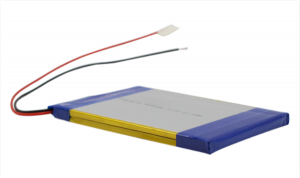Lithium-ion batteries generally contain a metal coil and flammable lithium-ion liquid. Small metal fragments are floating in the liquid. The contents of the battery are under pressure, so if a piece of metal pierces the separator that insists on the separation of objects, or the battery is pierced, the high temperature caused by the violent reaction of lithium and water in the air will sometimes lead to lithium The battery is on fire.
Lithium batteries provide high power output with minimal weight. The design of the battery pack is based on lightness, which means that there is a thin partition between the battery and the thin casing. The separators and coatings are quite fragile and they can be pierced. If the battery is damaged, a short circuit will occur. A single spark can also ignite highly active lithium. Another possibility is that the lithium battery may be heated to the point of thermal runaway. Here, the heat of the contents exerts pressure on the battery, which may cause the lithium battery to burst.
The way to prevent lithium-ion batteries from catching fire or blasting is to find the thermal blasting mechanism of lithium-ion batteries. The thermal blasting mechanism of lithium-ion batteries is: when the battery is subjected to thermal shock, overcharge, overdischarge, short circuit, vibration, and extrusion In the state of misuse, chemical and electrochemical reactions will occur between the active materials and electrolyte components in the battery, and a large amount of heat and gas will be generated, which will cause the battery to heat up. If the heat generation rate inside the lithium ion battery is greater than the heat dissipation rate , The reaction temperature in the system will continue to rise. When the heat and internal pressure accumulate to a certain level, it will cause the battery to burn or explode.
1. Add flame retardant to the existing electrolyte. However, in order to complete the flame retardancy, it is necessary to add a large amount of flame retardant to the electrolyte, which will correspondingly reduce the ionic conductivity of the electrolyte and significantly affect the electrochemical performance and energy density of the lithium battery.
2. Maintenance is achieved by adding a dedicated maintenance circuit. For example, to prevent overcharging of the lithium-ion battery, a PTC polymer switch or explosion-proof safety valve is installed in the safety helmet of the battery.
3. The thermal stability of lithium batteries is related to the type of positive electrode material and electrolyte. After optimizing the synthesis conditions and improving the synthesis method, the cathode material with good thermal stability is synthesized.
4. Weakly oxidize the surface of carbon materials, such as: reduction, doping, surface modification, etc.; or use spherical and fibrous carbon anode materials to improve the thermal stability of lithium batteries.
Post time: Oct-15-2021





